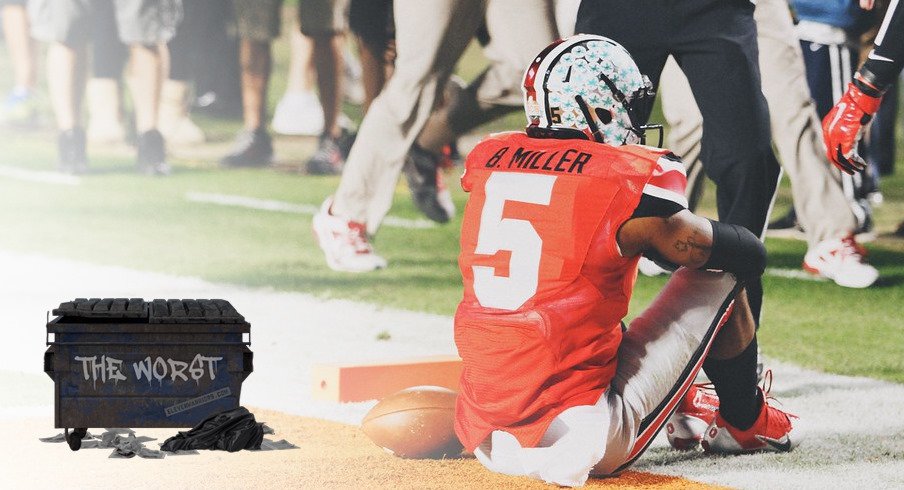Former North Carolina defensive end Beau Atkinson commits to Ohio State.
In 2002, the Ohio State Buckeyes football team held six teams to under 10 points, including No. 23 Minnesota, No. 18 Penn State, No. 12 Michigan, and No. 10 Washington State. Only two teams on their schedule scored more than 20 points against them, and one of those was the national championship runner-up.
This is the Ohio State that I grew up with, and in a larger sense, this is the football that I grew up with. Sure, the Cooper years featured high scoring on the part of the Buckeyes, but the Silver Bullets held up a very real standard that I personally found pretty kickass and hopefully, eternal.
Part of that defensive domination stretching into infinity was a very specific record/statistic that Ohio State held, one which was so unusual that it was hard to nail down the specifics as to its origins and it might've even been unique in college football.
It was one of those stats you hear once and want tattooed on your face.
Ohio State, in a century of playing football games and scoring points, had never lost a game when scoring 35 points or more.
Think about that. Over hundreds and hundreds of games and generations of teams, if the Buckeyes scored 35 then bam, that's a win (and, apparently, one tie). No problem. 279-0-1.
I wrote about that record four years ago:
That ridiculous statistic was more than just my go-to factoid when I wanted to sound like I know something about football to strangers, it was a mathematically and logically insane thing to contemplate. A football team accomplishing that over many, many decades of effort is somewhere on the same level of likelihood as you waking up every morning for the better part of a year at exactly 6:48 in the morning.
The best part of the record is that it wasn't the result of a hot streak that lasted a season or two, it wasn't the byproduct of one really good coach, [...] it also spoke to the tradition of excellent defense played by the Buckeyes.
Note the use of past-tense, because one of the many, many incredibly frustrating things about the 2014 Orange Bowl loss to Clemson was the death of that particular fact. As Ohio State lost that game, 40-35, I realized, finally, that the football of my youth was gone and not coming back.
Of course, it'd be silly to say that great and dominant defense can't exist anymore. Last season the Buckeyes held five teams under ten points and ranked fourth nationally in scoring defense (allowing just 13.7 points per game), and trends over the last decade in college football among the top-tier teams show that scoring defense really hasn't changed that much.
But what the 2014 Orange Bowl told me was that great defense is no longer enough. In that game, Clemson quarterback Tajh Boyd accounted for over 500 yards of offense and six touchdowns. Never mind what the Buckeyes had accomplished defensively in the 2013 season (although, to be clear, they weren't great), they were going to have to out-score a marquee opponent because that was suddenly the most viable option.
People make comments and jokes about the stress of Tresselball and attempting to literally run out the clock with 20 minutes left and a two point lead, but... well, dammit, you get used to it. The pit in your stomach and dull buzz in the back of your head becomes a part of football as much as an impeccably placed 48 yard punt. And when it's gone, you miss it.
Now, Ohio State tries to outgun teams, even mediocre ones, because the logistics of college football have made the alternative untenable.
And that's okay! Things change, football evolves. That's fine. It's weird that Ohio State gets into a 100+ point shootout with the likes of Maryland from time to time, but it's fine. That part isn't The Worst, and with a coach like Ryan Day at the helm, that kind of game is going to work out in the favor of the Buckeyes much more often than not.
But man, I want that damn stat back. Losing it to the likes of Clemson and realizing that things were never going to be the same at the same time, that was definitely The Worst.


